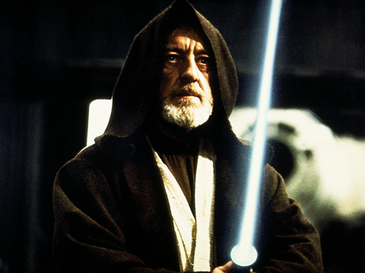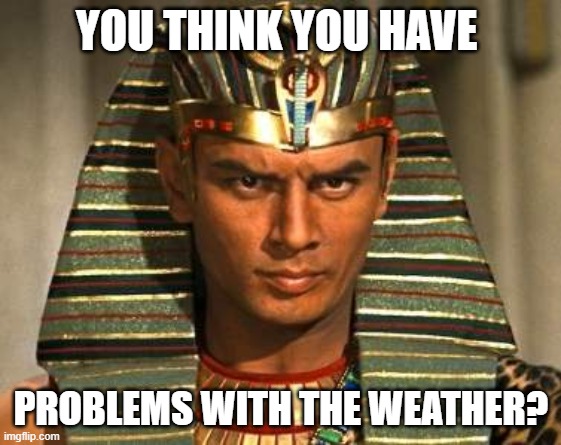Plauges
Quiz: Severe Storms and hail
1.
Does
it rain in Egypt? Storm?
2.
Hail
in real life-
https://www.youtube.com/watch?v=6JbU0dIq70E
Posters- vote your #1 and #2 on #1 and #2.
The natural explanations- Yul Brenner explains.
Big Rocks from the sky
Commentary
דָּם
Daym
Dome
Dume
Dahm
Dummy
צְפַרְדֵּעַ
Tzephardey
Tzephar’dayah
Tzephareh’day
Tzephare’dayah
Tzippitdydodah
כִּנִּים
Chinim
Kinim
Binim
Vinim
Candy!
עָרוֹב
Aruv
Arov
Eruv
Erov
Arby’s
דֶּבֶר
Davar
Deeveer
Doovoor
Dever
Dobby
שְׁחִין
Shecheev
Shecheen
Secheev
Secheen
Surfing
בָּרָד
Berad
Barod
Barad
Varad
Brad
אַרְבֶּה
Areveh
Arebeh
Aravah
Arbeh
Airborne
חשֶׁךְ
Chashech
Chashecha
Hashech
Hashecha
Choshech
מַכַּת בְּכוֹרוֹת
Makat Bechurut
Makat Vechurut
Makat Bechorot
Makat Vechorot
Makas Bechoirois
קַר
חַם
מָתוֹק
גָּדוֹל
1) Which of these
states almost never sees hail?
a. California
b. New Mexico
c. Colorado
d. Wyoming
e. Alaska
2) What is the name
of the kind of storm that produces the largest hail?
a. Hurricane
b. Derecho
c. Supercell
d. Monsoon
e. Kwyijibo
3) Tornadoes are
rated 0-5 on the EF scale. What does EF
stand for?
a. Einstein-Fermat
b. Enhanced Fujita
c. Echo Focusing
(radar)
d. Easy Flowing
e. Eschadoodle
Ferengenar
4) In Illinois, the month with the most hail is usually
a. March
b. April
c. May
d. June
e. October
5) The 1999 Bridge Creek–Moore tornado had the fasted winds ever
recorded with radar, with maximum wind speed of
a. 224 mph
b. 324 mph
c. 424 mph
d. 524 mph
e. It’s a, but only
if you put these all as kph.
6) How close have
you ever been to a tornado?
a. Never that close
b. I saw it from
afar
c. I saw it close….
Too close.
d. I drove really
close but didn’t see it.
e. We drove right
through one. Disappointing.
7) A slow moving
storm can dump a lot of hail in one place.
What is the record for inches of hail in the USA from Seldon, Kansas, on June 3, 1959,?
a. 4”
b. 6”
c. 11”
d. 18”
e. Hail can’t get
more than an inch deep, and there is no Seldon in Kansas.
8) The largest recorded hailstone in U.S. history
fell on July 23, 2010, and weighed just
short of 2 lbs. How wide
was it?
a. 5.9”
b. 8.1”
c. 13”
d. 17.5”
e. Hail can’t get
physically bigger than 2” before it falls.
9) In where was the
largest hailstone found?
a. Vivian, Nebraska
b. Vivian, South
Dakota
c. Vivian, Illinois
d. Vivian, Oklahoma
e. Vivian , this is
a trick question, it was found in Quebec Canada.
10)
How many people have died from hail injury since 2000?
a. 1
b. 2
c. 3
d. 4
e. Nobody has died
from hail- that would be ridiculous with modern forecasts.
#1- “What do I actually think happened with the Ten
Plagues? Well, that’s easy, it’s:
a) Exactly
what the Torah says. God made something
supernatural happen. God can make water turn to blood, or cause it to hail in the desert. The
plagues were miracles, and our Torah says God can do miracles.
b) Exactly
what the Torah says. God worked through nature at the right time for miracles. Something in nature made the waters
turn red and smell—at just the right time.
Storms are rare but not impossible in Egypt, so it hailed- at just the
right time. The plagues were miracles,
and our Torah says God can do miracles.
c) Something
like what the Torah says, but not so dramatic. The Torah is exaggerating the
details.
d) Not what the
Torah says. The story was made up by
the rabbis to scare people into believing in God and make a big deal out of
an ancient Canaanite holiday that existed long ago, where they ate unleavened
bread.
#2- “It seems there are many events in the Torah that are
seen by many people as scientifically impossible. When this happens, some
people choose to abandon the Torah for Science, others the other way around,
and some think of something in between.
What do you believe when it comes to the Torah and Science?
a)  Torah has to
come first. Science is always changing
its mind about things. Scientist used to
say smoking was good for you and that plastics were safe, but eggs were
dangerous to eat. Every year something
else is suddenly good or bad for you.
But Murder is always wrong; Tripping a Blind person is always
wrong; Shabbat is always holy. The
Torah holds truths for living that do not change, unlike science’s ever
changing decisions.
Torah has to
come first. Science is always changing
its mind about things. Scientist used to
say smoking was good for you and that plastics were safe, but eggs were
dangerous to eat. Every year something
else is suddenly good or bad for you.
But Murder is always wrong; Tripping a Blind person is always
wrong; Shabbat is always holy. The
Torah holds truths for living that do not change, unlike science’s ever
changing decisions.
b)  Reading the Torah and expecting things to make sense in a scientific manner is dumb. The Torah is not a science text, just like a chemistry text book is not a source of right and wrong. Science and Torah are two different areas of human effort. “Science takes things apart to see how they work. Torah puts things together to see what they mean,” taught Baron Rabbi Sacks. If you spend time complaining that the miracles in the Torah aren’t scientifically possible, you are missing the reason the miracles are there to begin with!
Reading the Torah and expecting things to make sense in a scientific manner is dumb. The Torah is not a science text, just like a chemistry text book is not a source of right and wrong. Science and Torah are two different areas of human effort. “Science takes things apart to see how they work. Torah puts things together to see what they mean,” taught Baron Rabbi Sacks. If you spend time complaining that the miracles in the Torah aren’t scientifically possible, you are missing the reason the miracles are there to begin with!
c) When Torah
and Science are in conflict, I’m going to go with Science over Torah. When
I read about miracles in the Torah, they seems almost as silly as the rules on
Shabbat or keeping kosher, which I don’t see as helping people become better
human beings. The Torah helps sometimes
with laws against stealing, killing, cheating and the like, and holidays are cute when you are a kid, but
for important things like stars and gravity and cures for diseases, that comes from Science. I wouldn’t say we don't need the Torah, we just
need it less now that we have science..jpg)
d) There is no conflict. Science tells us
everything we need to know. If we don’t understand it yet, Science proves that
we will understand it all some day soon. All the things religions claims
happened? Science proves they never really did happen or were really
exaggerated. Science shows us what is
true, not religion. Science can measure and weigh
and prove things, religion cannot. The Torah talks about invisible beings and
impossible events. When we lived in the dark ages, maybe we needed religion, but we don’t need a Torah now that we have science. Science made the
universe, not God.
Science can measure and weigh
and prove things, religion cannot. The Torah talks about invisible beings and
impossible events. When we lived in the dark ages, maybe we needed religion, but we don’t need a Torah now that we have science. Science made the
universe, not God.
AND NOW, A WORD FROM RABBI DR. MOSES BEN MAIMON (RAMBAM)
Rambam, in his Guide for the Perplexed says:
"The concepts of good and evil are terms employed in the study of social
conventions (mefursamot), not in that of scientific/rational knowledge (muskalot).
For example it is not correct to say in
reference to the proposition "the planets in the heavens are
spherical," it is "good"--- or to declare the assertion that
"the earth is flat" to be "evil". But we say of the one it
is true, and of the other it is false. Similarly, our language expresses the
idea of true and false by the terms emet and sheker, but with the
morally right and the morally wrong, with tov and rah."
Before Ahdam and Chavah eat of the fruit of
the eytz HA’daat tov ve rah/the tree of knowing good and evil, Rambam
argues, they lived in a world true and false, a scientific world. Once they ate of the tree, they didn’t just have an intellect, they had a conscience. This is when being a
human being meant being responsible for
knowing not just the scientific
standards of true and false, but
the ethical standards of Good and Evil. For Rambam, a philosopher and
doctor who knew the best science of this day, science can bring us to True and
false, but not knowledge of Good and
Evil. For that, he would argue, there
was the revelation at Mt. Sinai, where God gave us Torah.
BIG, COLD ROCKS FALLING FROM THE SKY:BARAD/HAIL- SHEMOT/EXODUS 9:13-35
Then
Adonai said to Moses, "Early in the morning, go to Pharaoh and say to him,
'This is what Adonai, God of the Hebrews says: Let my people go to worship
Me. Now I will send plagues that will affect you as well as your servants
and your people. This is how you will know that there is no one like Me
anywhere on earth. By now I could have sent forth my hand against you
and your people with a plague that would have wiped you off the earth. But
I have spared you for this reason: I will show you My power and make My name
famous throughout the earth. Yet you are still holding yourself over My
people and have not sent them out.
“So, at
this time tomorrow I will send the worst hailstorm that has ever happened in
Egypt from the day it was founded until today. Now, send [servants] to
bring your livestock and everything else you have indoors. All people and
animals still outside and not brought in will die when the hail falls on
them.'" Those members of Pharaoh's court who listened to Adonai's
warning brought their servants and cattle indoors quickly. But those who
didn't take Adonai's warning seriously left their servants and animals out in
the open.
Then
Adonai said to Moses, "Lift your hand toward the sky, and hail will fall
on people, animals, and every plant in the fields of Egypt." When
Moses lifted his staff toward the sky, Adonai sent thunder and hail, and fire
struck the earth; and Adonai made it hail on Egypt. It hailed, and fire
flashed within the hail. There had been no storm like it in all the land of
Egypt since it had become a nation. All over Egypt the hail knocked down
everything that was out in the open. It struck down people, animals, and every
plant in the fields and destroyed every tree in the fields. The only
place it didn't hail was the region of Goshen, where Bnai Yisrael lived.
Pharaoh
sent and had Moshe and Aharon called and said to them:
“This-time I have sinned! Adonai is the
one-in-the-right, I and my people are the ones-in-the-wrong! Plead with Adonai, for enough is the God-thunder and this hail!
Let me send you free—do not continue staying here!”
Moshe
said to him: “As soon as I have gone out of the city, I will spread out my
hands to Adonai; the thunder will stop and the hail will be no more— in order that you may know that the land
belongs to Adonai. But as for you and
your servants, I know well that you do
not yet stand-in-fear before the face of
Adonai God!”
—Now
the flax and the barley were stricken, for the barley was in ears and the flax
was in buds, but the wheat and the spelt
were not ruined, for they are late-ripening.— Moshe went from Pharaoh, outside the city, and
spread out his hands to Adonai, and the
thunder and the hail stopped, and the rain no longer poured down to earth. Pharaoh saw that the rain and the hail and the
thunder had stopped, so he continued to
sin: he made his heart heavy-with-stubbornness, his and his servants’. Pharaoh’s heart remained strong-willed, and he
did not send Bnei Yisrael free, as Adonai
had spoken through Moshe.
Commentators on Exodus 9:24
Rashi France, 11th century,
often focusing on Midrash and Aggadic (legendary/non-legal) parts of the Talmud:
מתלקחת בתוך הברד
[AND FIRE] FLASHING UP AMIDST THE HAIL — a miracle within a miracle! Fire and
hail mingled, although hail is water! But in order to perform the will of-
their Creator they made peace one with the other (Exodus Rabbah 12:4).
Chizkuni,—Hezekiah Ben Manoach, 13th century French
commentator who compiled his work from over twenty other commentators:
ואש מתלקחת בתוך הברד,
“and fire was contained within the hail stones,” it is clear that after the
hail had hit the ground, that this fire started conflagrations. Otherwise who
would have known that there was fire inside the hail stones?
Sforno —16th century Italian rabbi, Biblical commentator,
philosopher and physician.
ואש מתלקחת בתוך הברד.
Driven by the immense velocity and pressure of the descending hailstones. The
heat generated in the atmosphere resulted in unnatural sounds being heard
everywhere. Both hard and soft plants were destroyed by the hail. Verse 25
spells all this out in detail.
Or HaChaim
, Morocco, 16th century, Talmudist
and kabbalist. Torah commentary is from
the weekly lessons he taught his daughters (he had no sons).
ויהי ברד ואש, there was hail and fire simultaneously, etc. The word מתלקחת is used to inform us that though water and
fires are opposites, one of which is bound to prevail over the other in any
encounter, in this instance they demonstrated the ability to co-exist. This was
possible since both were performing God's will by so doing.
Cassuto, Italy, 20th century Moshe David Cassuto was an Italian historian, a rabbi, and a scholar of the Hebrew Bible and Ugaritic literature,[1] in the University of Florence, then at the University of Rome La Sapienza, and then Hebrew University of Jerusalem.
The term Eish Mitchalechet/flashing fire is
also found in Ezekiel 1:4 ( “I looked, and lo, a stormy wind came sweeping out of the
north—a huge cloud and flashing fire”) and also there it is the description of a storm. Fire (in this verse), that
is the lightning, which is called flaming because it does not go in a straight
direction, but in a diagonal way, and as if it takes itself from time to time
to go back or turn to the side, [like a flame].
-





No comments:
Post a Comment